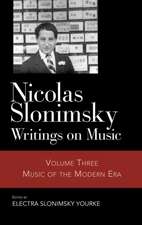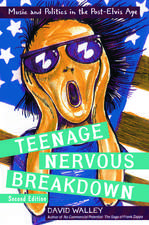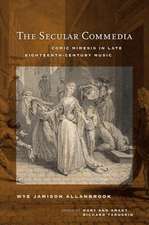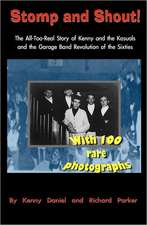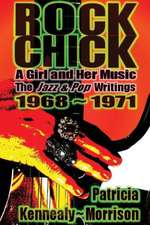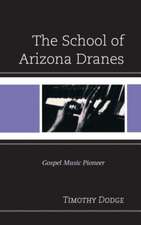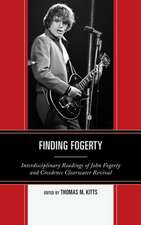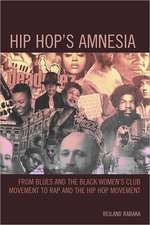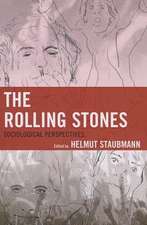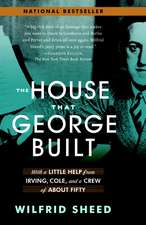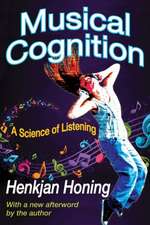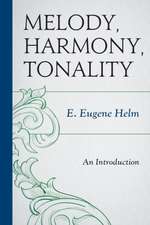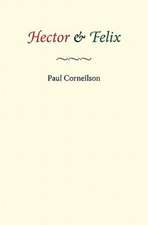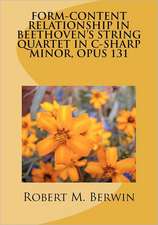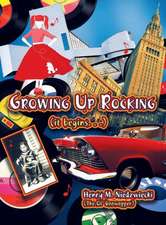Rhythmic Gesture in Mozart: Le Nozze di Figaro and Don Giovanni
Autor Wye Jamison Allanbrooken Limba Engleză Paperback – 27 iun 2016
Wye Jamison Allanbrook’s widely influential Rhythmic Gesture in Mozart challenges the view that Wolfgang Amadeus Mozart’s music was a “pure play” of key and theme, more abstract than that of his predecessors. Allanbrook’s innovative work shows that Mozart used a vocabulary of symbolic gestures and musical rhythms to reveal the nature of his characters and their interrelations. The dance rhythms and meters that pervade his operas conveyed very specific meanings to the audiences of the day.
Preț: 247.40 lei
Nou
Puncte Express: 371
Preț estimativ în valută:
47.35€ • 49.25$ • 39.09£
47.35€ • 49.25$ • 39.09£
Carte tipărită la comandă
Livrare economică 14-28 aprilie
Preluare comenzi: 021 569.72.76
Specificații
ISBN-13: 9780226014043
ISBN-10: 0226014045
Pagini: 408
Ilustrații: 224 musical examples
Dimensiuni: 152 x 229 x 23 mm
Greutate: 0.54 kg
Editura: University of Chicago Press
Colecția University of Chicago Press
ISBN-10: 0226014045
Pagini: 408
Ilustrații: 224 musical examples
Dimensiuni: 152 x 229 x 23 mm
Greutate: 0.54 kg
Editura: University of Chicago Press
Colecția University of Chicago Press
Notă biografică
Wye Jamison Allanbrook (1943–2010) was professor of music at the University of California, Berkeley, and the author of The Secular Commedia: Comic Mimesis in Late Eighteenth-Century Music.
Cuprins
List of Figures
Preface
INTRODUCTION
Expression, Imitation, and the Musical Topos
PART ONE
Mozart's Rhythmic Topoi
1. The Shapes of Rhythms
2. The Gestures of Social Dance
PART TWO
Le nozze di Figaro
3. Act I
4. Act II
5. Act III
6. Act IV
PART THREE
Don Giovanni
7. Overture and Introduction
8. The Opening Scene
9. The Noble Lovers
10. Elvira
11. Zerlina and Masetto
12. The Two Finales
Afterword
Notes
Index
Preface
INTRODUCTION
Expression, Imitation, and the Musical Topos
PART ONE
Mozart's Rhythmic Topoi
1. The Shapes of Rhythms
2. The Gestures of Social Dance
PART TWO
Le nozze di Figaro
3. Act I
4. Act II
5. Act III
6. Act IV
PART THREE
Don Giovanni
7. Overture and Introduction
8. The Opening Scene
9. The Noble Lovers
10. Elvira
11. Zerlina and Masetto
12. The Two Finales
Afterword
Notes
Index
Recenzii
“Novel in approach, finely organized, and beautifully written.”
“Allanbrook’s discussion is by no means limited to matters of rhythm; she also employs more traditional methods of harmonic, motivic, formal, and linear analysis. . . . In its flexibility of approach and its concern for ethical and spiritual matters, the book is a model of critical analysis at its most humane. It represents, in fact, a wonderful antidote to the arid, technical analytic writing that sometimes prevails in such studies. . . . As Allanbrook shows, a grasp of the topical vocabulary in this music can lead to a variety of new insights into its expressive message.”
“Rhythmic Gesture in Mozart enriches at least three fields: the history and criticism of dance, the Classic Period, and Mozart studies. . . . A splendid, self-contained achievement which, in its blend of disciplines and its creative interpretations of analytical observations, represents writing about music at its best.”
“Enormously stimulating. . . . Anyone working through these often multileveled interpretations will gain an enhanced sensitivity to Mozart’s rhythmic techniques and an expanded comprehension of the means by which he fused drama and music.”
“Allanbrook’s erudite study of eighteenth-century dances and their rhythms in these two operas is marvelous scholarship.”

